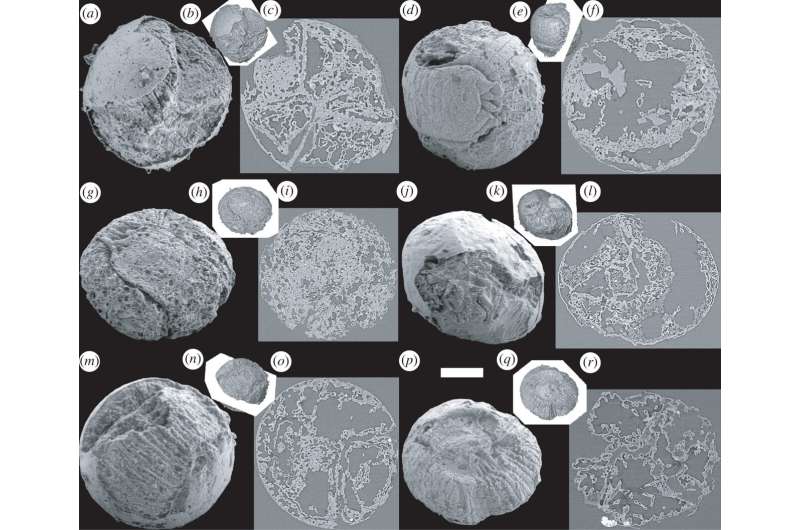October 5, 2022 report
Exceptionally well preserved fossilized worm embryo from the Cambrian period identified in China

Bob Yirka
news contributor

A team of researchers at Peking University, the First Institute of Oceanography and the University of Bristol has identified a well-preserved fossilized Markuelia hunanensis embryo of the Cambrian period. In their paper published in the journal Royal Society Open Science, the group describes the condition and attributes of the fossil, including muscle tissue and brain matter.
In Hunan province in South China, scientists have been digging up fossils for many years at a limestone-rich site called Wangcun Lagerstätte—among those fossils found have been a large number of Markuelia hunanensis embryos, all dating back to the Cambrian period.
Prior research has suggested that such embryos strongly resemble adults, which has given researchers a good idea of what they looked like. In this new effort, the researchers have identified one exceptionally well-preserved fossil. Markuelia hunanensis were types of worms that lived approximately 500 million years ago, close to the same time that plants first began growing on land and when most animal groups first began to evolve. Their closest modern relatives are mud dragons.
The researchers note that soft tissue parts of ancient creatures are rarely fossilized due to their mushy nature; thus, the embryos found in China have been of great interest to scientists. Not only do they exist, but many are still in three dimensions—most other specimens at other sites have been flattened due to the way they were preserved.
In this new effort, the researchers found a specimen that was so well preserved that many of its organs could be discerned, including its doughnut-shaped brain. The researchers describe it as similar to that of a nematode.
The researchers note that their finding is the first report of fossilized nervous system material in a scalidophoran, a type of organism that includes many types of worms and arthropods. They suggest the possibility that there are many more examples of three dimensionally preserved soft tissue fossils in already discovered fossils. Their soft tissues have not been identified, they suggest, because scientists have been assuming that there could not have been any present.
Written for you by our author —this article is the result of careful human work. We rely on readers like you to keep independent science journalism alive. If this reporting matters to you, please consider a (especially monthly). You'll get an ad-free account as a thank-you.
More information: Xi-ping Dong et al, Internal anatomy of a fossilized embryonic stage of the Cambrian-Ordovician scalidophoran Markuelia, Royal Society Open Science (2022).
Journal information: Royal Society Open Science
© 2022 Science X Network





















